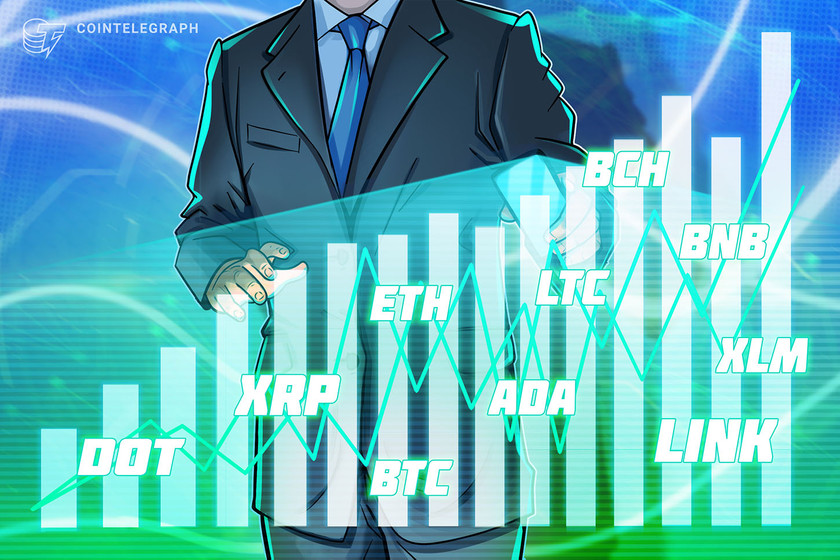BRC-20 tokens are presenting new opportunities for Bitcoin
While the ossification of Bitcoin’s codebase has brought stability and reliability, it’s made Bitcoin a little… well, boring. Where once the Bitcoin ecosystem formed a hub of innovation and a hive of activity, that momentum has shifted to second- and third-generation chains whose architecture is better suited to supporting multiple use cases and applications. At least that was the case until the emergence of Ordinals, a technology that has sparked a new wave of innovation on Bitcoin.
Throughout 2023, Bitcoin’s ecosystem developed rapidly. Emerging asset types, exemplified by Ordinals NFTs and BRC-20 tokens, have sparked widespread community enthusiasm, leading to a substantial increase in BTC miners’ earnings.
Related: Expect some crypto companies to fail in the wake of Bitcoin’s halving
Now, tokens can be issued on the Bitcoin network by projects whose very security is anchored to the Bitcoin blockchain. And the best part? Ordinals haven’t required changing a single line in Bitcoin’s code. Furthermore, the BRC-20 standards are evolving rapidly, positioning them to become an indispensable new element within the BTC ecosystem in the future.
One coin spawns many tokens
Ordinals is a protocol built on top of the Bitcoin blockchain. Each Bitcoin can be broken down into 100 million units, known as sats. Each of these sats can be given a unique identifier using Ordinals and transferred over the Bitcoin network with this data attached. The Ordinals concept, developed by Casey Rodarmor, has proven phenomenally successful. It’s opened the floodgates to a wave of Bitcoin-based NFTs. Because of it, a virtually infinite number of tokens can now be traded on Bitcoin.

At first, Ordinals were latched onto by tech-minded Bitcoiners who could meet the high bar for minting and trading them. The process, after all, requires sending a sat to a Taproot-compatible wallet and inscribing metadata with the transaction. Initially, this required running a Bitcoin node and having familiarity with a command line interface, but code-free solutions have since emerged and have been responsible for mainstreaming Ordinals, particularly for the benefit of the Ethereum community.
NFTs were the first use case for the Ordinals protocol, but the same technology can be used to issue fungible tokens, similar to the ERC-20 tokens that Ethereum supports. In fact, the token standard that’s emerged for these Bitcoin-native assets even bears the same naming structure: BRC-20.
Already, there are BRC-20 projects springing up with Bitcoin-based tokens, forming a fledgling tokenized ecosystem that’s coalescing around Bitcoin and Ordinals. Several of these tokens have captured the market’s imagination, finding their way to tier-1 exchanges and spreading the word about the BRC-20 takeover in the process.
From sats to SATS
Many of the communities that have formed around Ordinals and Bitcoin are focused on fun, first and foremost. Gaming, collecting, speculating, socializing and interacting ahead of serious stuff like enterprise or institutional usage. $SATS is the perfect case in point. Bitcoin’s very own memecoin, SATS is naturally a BRC-20 token, but it’s also so much more.

A total supply of 2,100,000,000,000,000 means $SATS is literally the Bitcoin supply times 100 million. In other words, there’s a SAT for every sat. Projects like this may not be changing the world, but they’re making Bitcoin fun again, and in the process, educating newcomers on key characteristics that are enshrined in Bitcoin’s architecture.
Other BRC-20 tokens have also carved out market share while bolstering the case for Ordinals on Bitcoin. Combined, the market cap of all BRC-20 tokens is more than $1 billion (as of Dec. 7), most of which can be credited to ORDI, which suggests there is still plenty of room for growth.
Taproot made tokens possible
The idea of issuing tokens on the Bitcoin network can’t be found in the Bitcoin whitepaper: that use case hadn’t been envisioned in 2008. In fact, it wasn’t even possible to do so back then. It was not until the Taproot upgrade, which went live on the Bitcoin network in November 2021, that this became possible. Ordinals sprung up three months later, and the NFTs it spawned have been followed by an assortment of BRC-20 token projects.
Taproot allows data to be added to block space, providing a means of minting tokens on Bitcoin. A single satoshi is minted and information concerning an entire set of fungible tokens is attached. This is done using JSON data where the token’s name, ticker, supply and suchlike can be entered. Despite sharing the same naming structure as ERC-20, it’s clear that BRC-20 tokens work very differently. This isn’t surprising given that they are, technically, a workaround for a network that wasn’t designed to support tokens.
Related: 3 theses that will drive Ethereum and Bitcoin in the next bull market
While the architecture may be unorthodox, the net result is the same. Just as communities formed around shared tokens and shared interests following the launch of Ethereum’s ERC-20 token standard, something similar is occurring on Bitcoin. BRC-20s aren’t beloved by all Bitcoiners, it should be noted: some take exception to the block space the tokens take up, which can cause fees to spike. Others simply aren’t interested in anything that isn’t pure BTC.
Look to the future
When Ethereum launched, it had the ability to support a rich and diverse ecosystem of token-based projects — and that’s exactly what it did eventually. It took time for the communities to form and tooling to be built out, however. Bitcoin and the BRC-20 standard are currently where Ethereum was in 2017: full of potential that has yet to be realized.
Key infrastructure connecting Bitcoin tokenization to the EVM chains is being completed, with MultiBit the latest project to make headway here, launching a two-way bridge for BRC-20 and ERC-20 transfers. 12 months from now, what will the BRC-20 landscape resemble, and what opportunities will it have delivered to those bold enough to have gotten in early? The surge of ERC-20 tokens and ICOs in 2017 propelled Ether’s (ETH) price thirtyfold within a year. While current market dynamics are different, the prospect of Bitcoin replicating Ethereum’s success remains promising.
For a growing band of supporters who are tired of what they perceive as stagnation on Ethereum and who don’t quite fit in with Bitcoin maximalists, Ordinals and BRC-20 tokens have made crypto fun again. To them, the movement represents a return to Bitcoin’s experimental, creative roots. If there’s a chance to make some money along the way, while advancing their understanding of Bitcoin and spreading memes into the bargain, all the better.
Gracy Chen is the managing director of the crypto derivatives exchange Bitget, where she oversees market expansion, business strategy, and corporate development. Before joining Bitget, she held executive positions at the Fortune 500 unicorn company Accumulus and venture-backed VR startups XRSPACE and ReigVR. She was also an early investor in BitKeep, Asia’s leading decentralized wallet. She was honored in 2015 as a Global Shaper by the World Economic Forum. She graduated from the National University of Singapore and is currently pursuing an MBA degree at the Massachusetts Institute of Technology.
This article is for general information purposes and is not intended to be and should not be taken as legal or investment advice. The views, thoughts and opinions expressed here are the author’s alone and do not necessarily reflect or represent the views and opinions of Cointelegraph.








